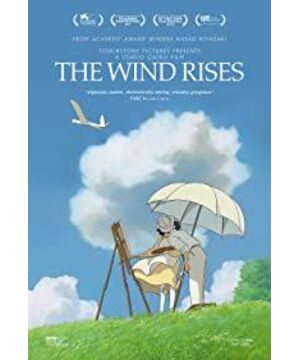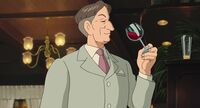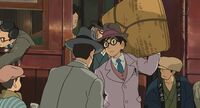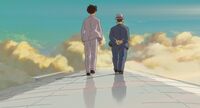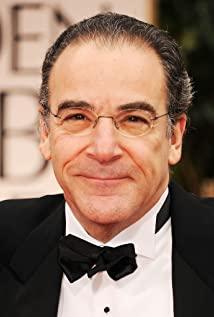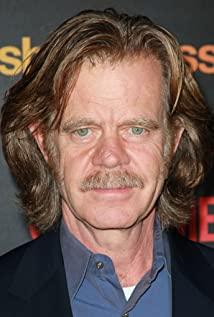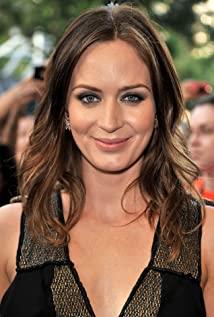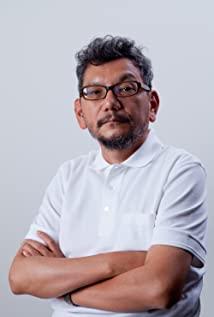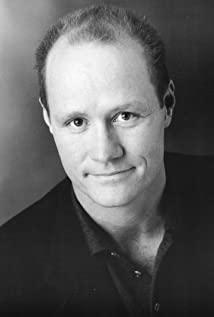Although this award is not necessarily awarded to masters who have already retired, most of the recipients are in the final years of their careers. The coronation of Hayao Miyazaki, who just announced his retirement last year, is somewhat of a success. And he also became the second Japanese filmmaker to win this honor after Akira Kurosawa, the "Movie Emperor".
As a die-hard fan of Mr. Gong, I am both gratified and embarrassed for his award. As an Oriental and recognized by the world's major film festivals, Hayao Miyazaki has achieved the ultimate in the field of hand-drawn animation, and judging from the current trend of animation development, it may even be the final peak. Therefore, although this award was awarded to him, it is more like "closing the coffin" for the traditional hand-made animation art.
The good news, though, is that Miyazaki hasn't retracted his retirement announcement, but at least promised to continue making short animations. This makes us not to worry, at least in the short term, that the most familiar chinchilla will disappear from the public eye.
Below, the author uses ten key words to take you to review Hayao Miyazaki's eleven animated feature films, and to reminisce about the countless pictures that have brought us moving, warm and childish. At the same time, I will also give my most sincere expectations to the younger generation such as Miyazaki Goro and Mirin Hongchang, hoping that they will grow up enough to carry the banner of Ghibli and continue to pass on this art about dreams. absolutely.
1. Innocence
Although I have always scoffed at the argument that "animations are made for children", this art that originated from children's books still requires the creator to maintain a heart full of innocence and fun.
In fact, the adultization of animation content and themes does not run counter to the romanticization of presentation techniques. Or it can be said that an excellent animated film should be suitable for all ages. It can not only allow adults to see less superficial connotations, but also prevent children from being deterred by overly mature narratives.
The secret of Miyazaki's success is to maintain such an imaginative innocence like a child, and it has been preserved to this day when he is full of white hair.
In his mind, the huge, complicated but interesting different world in "Spirited Away" can be born, and the chubby and cute Totoro can be born. He can use his imagination to make "Olie" "Buddha's Travels" and "The Daughter of the Sea" were adapted into romantic, lovely, but also good-hearted stories.
More importantly, his kindness. He can't bear to bring the ugly side of the adult world into his works, so there are very few real bad people in his works. Even if there are metaphors, it should be wrapped in fairy tale clothes so that the children will not hate it.
For the two works with slightly more serious themes-"Red Pig" and "The Wind Rises", the old man also chose to be as soft and interesting as possible. In "Red Pig", although he wanted to express the cruelty of war and the preciousness of peace, it turned into a lively comedy under the interpretation of groups of air pirates with interesting characters. And even the most obscure and adult-like "The Wind Rises" in his works is also mixed with the content of "dream", which makes the original brutal plot, a little colorful background.
Children can read thrilling good stories from his movies, but adults can read more from them. The charm of Hayao Miyazaki comes from this.
2. Romance It
is said that Easterners do not understand romance as well as Westerners, but Hayao Miyazaki's films are clearly romantic in a mess.
His romance is not just a little love and a melody like you and me, but a sincere emotion and a beautiful imagination. In "City in the Sky", Balu and Hida hold hands in Laputa, and in "Spirited Away", Chihiro and the white dragon soar in the sky. These stories with surreal elements and fairy tale nature will sprout paragraph after paragraph. The feelings in the book, with its romantic approach, make people feel heart-warming.
Except for the combination of Erlang and Nahoko in "The Wind Rises", which had to be done for the sake of narrative development and tragic contrast, in Hayao Miyazaki's films, there are few strong emotions that are truly called "love" , but more of a kind of ignorant feeling between friendship and love. That kind of beautiful state of "youda and above lovers are not full" is exactly what everyone feels at the beginning of adolescence, and it is also what we miss most when we are lost in the city's feasting and feasting as adults.
Even in "My Neighbor Totoro" and "The Witch's Delivery Service", which are entirely female protagonists, Mr. Gong will arrange for a teenager like Kantai and Ursra to add a touch of "soft emotion" to the "hard plot". Just like many years later, when we recall the so-and-so who was at the same table in elementary school or junior high school, there is a sweet look on his face and heart.
Japanese writer Natsume Suishi said that Orientals will not say "I love you" as straightforwardly as Europeans and Americans, but only need to say "Tonight's moonlight is just right", and naturally understand. The romance of the oriental people is so secretive, and it is not enough to talk about it.
3. Flying
Just like the original intention of Ghibli is the hot wind blowing in the desert, flying will always be Miyazaki's signature in the movie.
This is not unrelated to his childhood experiences. His father was the director of an aircraft factory that produced Zero fighter jets, so his childhood dream was to become an aircraft designer or pilot. With the defeat of Japan and the demise of militarism, his original dreams came to nothing.
But by accident, Hayao Miyazaki, who became an animator, realized this dream with the brush in his hand. Among all his films, except for the propositional "Lupin the Third", there are only two works purely with male protagonists, namely "Porcupine" and "The Wind Rises". The identity of the male protagonist in the film is The pilot and the designer, respectively.
Not only that, but in each of his works, traces related to flight can be found. The witch rides a broom, the wizard turns into a bird of prey, the white dragon crosses the sea of clouds, and the chinchilla jumps. There is even Laputa, the city of the sky above the sky, soaring for nine days in the name of the city. These flights have different shapes, but they all have a symbol of freedom. The old man used countless flying gestures to express a feeling of unwillingness to be bound, and this is also a long-lasting dream, from his childhood until today in his old age.
4. Anti-war
Although Japan still has many right-wing elements who clamor for militarism, most Japanese people today are very peaceful "herbivorous people".
As victims of war, we have worked hard to get Japan to admit to its many crimes committed more than half a century ago. It is undeniable that the official attitude is ambiguous in the evasion, and has never really taken the key step of realizing his sin. But at the same time, the Japanese literary and art circles have long had a voice of reflection, and the theme of "anti-war" has become a mainstream expression in art media such as literature and film.
From the generation of Akira Kurosawa and Yasujiro Ozu after the war, the film industry has begun to reflect on the evil of war. Li Zhizhong's famous remark - it is better to lose the war, it shows that Ozu, who was once a member of the Japanese invading army, has rational thinking about the pre-war fanaticism of the whole people. And Hayao Miyazaki, who was born during World War II and grew up in the post-war period of economic boom, undoubtedly has personal and deep feelings about it.
So when he really started to create works according to his own consciousness, the first thing he shot was the "Nausicaa" that he had already serialized in the magazine and was full of anti-war consciousness. Among them, the kingdom of Dorumegia, which advocates force, was secretly studied as a magic weapon for victory. The giant soldiers who once destroyed the world in those days obviously concealed nuclear weapons that make the world in real life shrouded in danger of extinction at any time. . The rivalry between the two kingdoms of Dorumegia and Vegeta also bears the shadow of the bipolar Cold War that reached its peak in the 1980s. The subsequent "City in the Sky" clearly expresses the driving force of human desire in war, and expresses the stupidity of war behavior and the ugliness of human nature in the form of fairy tales.
In Miyazaki's middle and late works, although the themes are more diverse, he has never forgotten his anti-war mission. Whether it is in surreal themes such as "Porcupine" and "Howl's Moving Castle", or in realistic works such as "The Wind Rises", they all ruthlessly criticize the devastation and cruelty brought about by war. .
Some angry youths like to say that the Japanese are not qualified to talk about peace. But in fact, we might as well think this way, just like the sturdy Germanic nation has turned into the gentle and humble Germans today, if even the Japanese like to talk about peace, then the world will really be peaceful.
5. Environmental protection
"Nausicaa" has a parallel dual theme setting. In addition to anti-war, another theme actually occupies a larger position, that is, environmental protection.
In the 1960s and 1970s, when my country was still enjoying the blue sky and white clouds, it was the period when Japan's environmental problems reached their peak. Half of the eight largest environmental pollution incidents in the twentieth century occurred in Japan during this period. In 1971, the Japanese, who had a hard time, set up the National Environment Agency, with strong administrative force and huge capital investment, and strived to gradually eliminate pollution.
If you are shocked by the complicated garbage sorting on the streets of Japan, it is not difficult to understand why the air indicators in any big city are comparable to Chinese resorts today, Japanese directors such as Hayao Miyazaki still spare no effort in their works. The concept of environmental protection is promoted in China, because such a concept has really penetrated the hearts of the Japanese people.
In Gong's works, the theme of the environment is usually explained in a combination of abstraction and figuration through a process of conflict, punishment and reconciliation between man and nature. "The Valley of the Wind" uses a doomsday scene to illustrate the ruthless destruction of the mother earth by human beings, and design strange creatures such as "king insects". The tyrannical god of destruction that destroys everything. Nausicaa's bravery enabled the communication between humans and the Overlord, and continued the balance that was about to be disrupted. In "Princess Mononoke", the contradiction between the "Iron Town" representing industrial civilization and the gods representing natural forces cannot be reconciled, and the intervention of Asidaka, the male protagonist representing farming civilization, provides a channel for the two to communicate . But in the end, the film did not give the ultimate solution, but a dramatic and magical way for the two sides to reach a temporary truce. This may indicate that even in Japan, where environmental problems have been effectively controlled, Miyazaki does not have much optimistic expectations for the harmonious coexistence of human beings and nature in the future.
As for China, who dare not go out without wearing a mask, our environmental protection literature and art are still at the level of preschool children's dramas such as Happy and Bears, which is really worrying.
6. The girl
Hayao Miyazaki is a person with a girl's plot.
In each of his films, there is at least one important girl character. In 8 of them, the girl played the first protagonist or the heroine as important as the male protagonist, only in the three special films of "City of Cagliostro", "Porcupine" and "The Wind Rises" , only adopted the setting with a larger role for the male protagonist, but the girl in it also carries a very important narrative and theme role.
Perhaps, in Hayao Miyazaki's heart, girls have such a symbolic meaning. They are pure, natural and innocent. On the one hand, they symbolize another value that is opposite to this world full of intrigue, desire and ill-will, and on the other hand, they show the most original and precious power of human beings and the world. Therefore, in "My Neighbor Totoro", only they can see the magical Totoro, in "The Witch's Delivery Service", only they can ride the flying broom, and in "Spirited Away", the bravery, perseverance and wisdom of girls, Not only save yourself, but also save others.
In fact, most of these girls in Miyazaki's works are very ordinary. Except for a few early characters such as Nausicaa in "Nausicaa", most of them neither have the peerless beauty, nor are they superior in wisdom and combat power. Even in "Howl's Moving Castle", the heroine Sophie faces everyone in the image of an ugly old woman for most of the movie. But they all have the most kind nature. Whether it is Nausicaa against the king insects who have destroyed human civilization countless times, or Assan in "Princess Mononoke" against the monsters and monsters in the mountains and forests, they all reflect a moral choice that is different from that of most other human beings. And Hayao Miyazaki's ultimate theme of anti-war and environmental protection is naturally revealed from them.
7. Growth
Although the theme and content of Gong Shi's works are not young, but in the setting of the protagonist, it has the characteristics of young age that are in the same line of Japanese animation.
In Japanese manga—especially royal manga, the protagonist is usually no older than a high school student. This has to do with the main audience for anime. Teenagers like to read stories about their peers, not old-fashioned adults.
But what Hayao Miyazaki considered was obviously not that simple. In his works, the protagonists are usually young. On the one hand, they can see the world through the protagonist's innocent perspective, highlighting the style of romance and childishness. On the other hand, they use their immaturity to show room for growth. and infinite possibilities in the future.
Xiaoyue and Xiaomei in "My Neighbor Totoro" are the youngest pair of protagonists in his works. The two moved from the city to the countryside with their parents, experiencing a new life, new partners, and a family where their mother was admitted to the hospital. crisis. With the help of the naive Chinchillas, they learned how to reassure their parents and how to be each other's support and concern. And Qiqi in "The Witch's Delivery Service", if she ran into the witch's magical coat, she was actually just a girl who longed for independence and came to the city to work hard. Leaving the meticulous embrace of her parents, she faces all kinds of new problems in life, such as making a living, making friends, and even contacting the opposite sex. She was so confused that she lost her mana, but she finally won the applause of the people. However, the special ability to understand cat language is gone forever, which is a price that must be paid in growth.
The most concentrated expression of the word "growth" is Hayao Miyazaki's work "Spirited Away", which is most wanted by international reputation. Chihiro, an innocent and inexperienced little girl, learns how to survive in society after a fantastic and wonderful journey. This kind of survival is not mediocre like parents, but full of positive energy such as diligence, friendship, and wisdom to make the world a better place. With her love, she gained the friendship of the white dragon and influenced the giant baby and the faceless monster. She meets all challenges with a small body, faces danger without flinching, and faces temptation without being confused. In order to highlight the power of growth and the value of innocence, the director also specially set up a pair of parents who were lost in material desires for her. They were confused and walking dead, and even after walking on the line of life and death, they were still ignorant.
Hayao Miyazaki, who is full of pessimism about the adult world, is fortunately full of hope for children.
8. Steampunk
In fact, Hayao Miyazaki's movie style is not so compatible with steampunk. Many of his works are visually steampunk, which is not unrelated to their adaptations of European originals.
The two most steampunk films, "Castle in the Sky", was born out of the 17th century fantasy novel "Gulliver's Travels", and "Howl's Moving Castle", adapted from the British children's novelist Diana W. Jones' "Harwell the Sorcerer and the Demon of Fire". The former restores the architectural style of the first industrial revolution and incorporates modern technology powered by steam. The latter places magic and technology in the same worldview, forming a dramatic conflict between the backward and the advanced.
In addition, "City in the Sky" and "Spirited Away" borrow more from the mechanical aesthetics advocated by steampunk. A large number of aircrafts in the former, and architectural and technological products such as water trains and soup houses in the latter, all have the characteristics of simple shape and exquisite structure. And this is the most noticeable external feature of steampunk.
But although steampunk is dressed in "steam", the real essence lies in the word "punk". That said, steampunk is inherently deviant. It has the subversion and rebellion of rock punk, and the apocalyptic atmosphere of cyberpunk and the alertness to modern technology and utopia. But these are almost impossible to find in Hayao Miyazaki's films.
Therefore, although it is easy to find steampunk elements in his films, in fact, he just uses the appearance of steampunk to put a nostalgic coat on the film to express his environmental protection, anti-war, and praise his beloved. Innocent and pure.
9. Music
When it comes to Hayao Miyazaki, there is another name that must be mentioned, that is Joe Hisaishi.
In 1983, Hayao Miyazaki chose Yoo Hisaishi, who had just graduated from the National Conservatory of Music in Japan, to write the soundtrack for his new work "The Valley of the Wind". At that time, I am afraid no one thought that this would be a cooperation that lasted for 30 years.
Hisaishi, later known as Hayao Miyazaki's official soundtrack composer, became famous with the film's beautiful and moving melody and graphic musical language. And then, the two masters collided with amazing sparks again and again. From "City in the Sky" to "The Wind Rises", countless melodies have become classics, and even people who have not seen Hayao Miyazaki's movies can understand Many of these music are familiar.
It is said that Hayao Miyazaki made Joe Hisaishi, which is self-evident. But on the other hand, isn't it that Hisaishi made Hayao Miyazaki? Just imagine that without his music, Gong's films may lack more than half of the soul, and its classicity will be lowered by more than one grade.
Hisaishi's music is still wonderful to listen to as an original soundtrack alone, but a more suitable way to enjoy it is still to listen to it in a movie. He can use musical notes to express the emotions of happiness and sadness clearly and movingly, and he can also use different musical instruments to create moving melodies with great emotional energy and imagination space, such as reunion and separation.
Today's Joe Hisaishi has already produced dozens of classic film works and has become the number one scorer in the East. His collaborators also include internationally renowned directors such as Takeshi Kitano and Jiang Wen. But when I heard his name, the one that immediately came to mind was still Hayao Miyazaki.
10. Hand-painted
When the new and old Japanese national comics "One Piece" and "Saint Seiya" have launched 3D theatrical versions, when the annual "Conan the Movie" and a lot of other theatrical animations are used more and more Computer technology is used to render backgrounds and effects, especially when Disney on the other side of the ocean has also abandoned the hand-drawn comics on which it has started in recent years, and has become indistinguishable from its Pixar, Miyazaki and his Ghibli Animation Film Company's insistence on pure hand-painting is particularly precious.
Anime is an industry in Japan, and it is a very large and mature industry. How to make money quickly and smoothly is the kingly way. Therefore, serial comics determine life and death based on reader surveys, TV animations are metabolized according to ratings, and as long as they are a little prosperous, Mashan will have a theatrical version of mixed good and bad, and the most direct way to make money in the cinema. Therefore, Japanese animation films often fall into two extremes, either extremely profound or extremely blunt.
Although he is an animator, Miyazaki has never been part of this system. He and his Ghibli don't fit in with Japan's highly commercialized anime creation machinery. In fact, the cost of hand-painted animation is much higher than that of ordinary movies, even compared to Hollywood special effects blockbusters. Another old man in Ghibli who insists more on his artistic taste than Hayao Miyazaki - Isao Takahata's new work "The Story of Kaguya Princess", which took eight years to produce and cost as high as 5 billion yen, which almost directly dragged down Ghibli. Force Studio.
But we know that true classics cannot be measured by money. Today, with the high development of computer graphics, he and them still insist on thinking about the world and life with brushes, and handing over a series of works that are heirloom-like enough to be left to future generations in our era. Lucky for fans of the times.
Almost every movie of Hayao Miyazaki and even Ghibli can occupy the champion of the Japanese box office that year, and even occupy the historical box office champion and four of the top ten. In the world, especially in East Asia with similar cultures, Ghibli has the strength and mission to rival Disney and Pixar. For more than 30 years, Ghibli has been prosperous, and its production attitude of excellence and the pursuit of artistic value and taste are the only methods. Perhaps one day in the future, hand-drawn animation will be completely replaced, but just like we will not forget Chaplin in the silent era and Princess Hepburn in the black and white era, Hayao Miyazaki, Ghibli and their animation will forever be in the history of film. Leaving a brilliant and insurmountable stroke.
View more about The Wind Rises reviews


